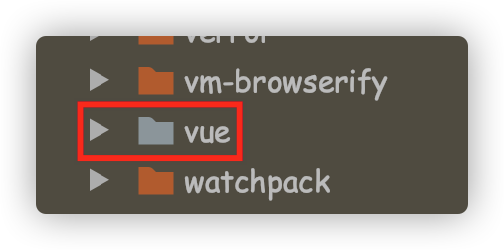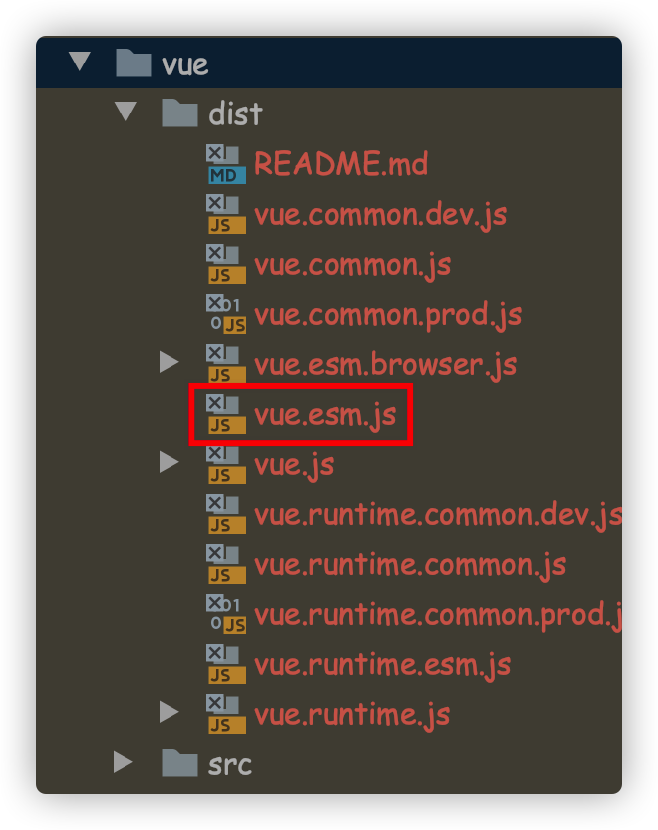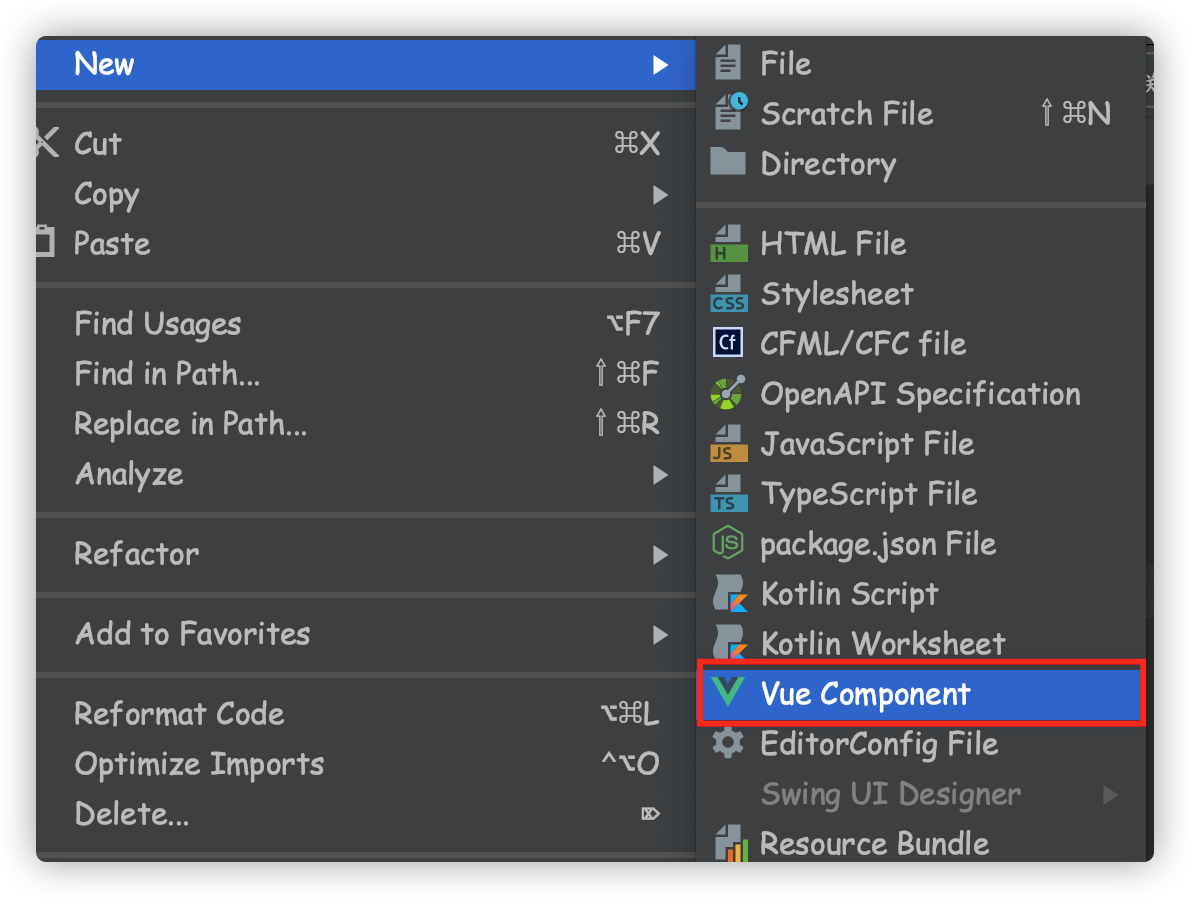一. 在webpack中配置vue
了解了webpack的原理和用法以后, 我们来引入Vue
webpack原理和用法详解链接: cnblogs.com/ITPower/p/14467745.html
第一步: 需要在webpack中引入vue.js
如何引入呢?
npm install vue --save
我们之前下载模块的时候, 都是使用--save-dev. 表示开发模式.
现在我们使用的是--save, 表示的是运行模式. 因为我们最终需要在线上使用vue, 所以 这里下载的时候指定为运行时模式
这样就在webpack中安装了vue, 在node_modules中就会增加一个文件夹vue

第二步: 使用import引入vue
import Vue from 'vue'
第三步: 构建vue对象并调用
const app = new Vue({ el: "#app", data: { message: "hello world!" } })
然后在页面调用message
<body>
<div id="app">
<p>{{message}}</p>
</div>
<script src="./dist/bundle.js" ></script>
</body>
第四步: 运行看效果
发现报异常.
[Vue warn]: You are using the runtime-only build of Vue where the template compiler is not available. Either pre-compile the templates into render functions, or use the compiler-included build.
这里提示说: 现在使用的runtime-only 构建template是无效的.
这句话是什么意思呢?
vue在发布的时候, 构建了两个版本
- 一个是: runtime-only: 使用这个版本, 代码里面不可以有template模板, 因为没有对应的编译器
- 另一个是: runtime-compiler: 代码中可以有template模板, 因为有对应的编译器来编译tempalte模板
解决这个问题, 我们需要修改webpack.config.js配置,增加
resolve:{ alias: { // 这段代表表示: 给vue指定了一个别名. 如果在代码中使用到了vue, 那么会去找node_module/vue/dist/vue.esm.js文件进行编译 'vue$': 'vue/dist/vue.esm.js' } }
这段代表表示: 给vue指定了一个别名. 如果在代码中使用到了vue, 那么会去找node_module/vue/dist/vue.esm.js文件进行编译

当我们使用vue/dist/vue.esm.js文件的时候, 就表示使用的是runtime-compiler的方式进行编译, 这样就可以有tempalte了
然后再来看效果:

二. vue模板的写法
1. el和template的关系
我们之前写代码的时候都是怎么写的呢? 来看看
首先有一个main.js文件
import Vue from 'vue'const app = new Vue({ el: "#app", data: { message: "hello world!", week:"今天是3月第一周" } })
这里指定了el, 表示当前vue作用于id=app的dom元素
<!DOCTYPE html> <html lang="en"> <head> <meta charset="UTF-8"> <title>Title</title> </head> <body> <div id="app"> <p>{{message}}</p> </div> <script src="./dist/bundle.js"></script> </body> </html>
然后我们就可以在页面上获取data的的变量了
但通常实际中, 我们不会这么写, 因为这样不方便扩展. 我们只会在index.html中写一个
<!DOCTYPE html> <html lang="en"> <head> <meta charset="UTF-8"> <title>Title</title> </head> <body> <div id="app"> </div> <script src="./dist/bundle.js"></script> </body> </html>
然后将页面要渲染的内容写到main.js中
const app = new Vue({ el: "#app", template: ` <div> <h2>{{message}}</h2> <h2>{{name}}</h2> </div> `, data: { message: "hello world!", week:"今天是3月第一周" } })
如上, 使用template标签来接收模板的内容. 这样, 我们重新npm run build, 这时可以看到, template中的内容覆盖了el元素的内容
来看看页面渲染的效果

我们发现, 之前id="app"的div元素没有了, 而是被template中的内容替换了.
总结:
el和template的关系是: template中的内容会替换el中的内容
2. 优化
当然了, 如果页面有很多东西, 把template放在new Vue()对象里就有些不合适了. 我们可以像之前一样, 把他提取出来
import Vue from 'vue' let comp1 = ` <div> <h2>{{message}}</h2> <h2>{{week}}</h2> </div> ` const app = new Vue({ el: "#app", template: comp1, data: { message: "hello world!", week:"今天是3月第一周" } })
把template单独提取出来, 如上写法. 这样在app中就没有大段的代码块了. 看这清晰了很多.
2.再优化
继续来优化, 模板中的变量, 是不是也可以提取到模板里面呢? 这样, 让vue对象直接引用这个模板就可以了
let comp1 = Vue.component("comp1", { template: ` <div> <h2>{{message}}</h2> <h2>{{week}}</h2> </div> `, data() { return { message: "hello world!", week:"今天是3月第一周" } } }) const app = new Vue({ el: "#app", template: '<comp1/>', components: { comp1 } })
这里就是将html和data整合成一个组件了,然后我们在vue中直接引入组件就可以了.
template: '<comp1/>',
这句话的含义是, 用comp1组件的内容替换id="app"的div的内容
4. 终极写法
继续将上面的内容进行优化. 我们将模板, 数据进行分离. 创建vue模板.
第一步: 创建一个vue component文件. 命名为app.vue

<template>
</template>
<script>
export default {
}
</script>
<style scoped></style>
我们看到vue模板包含三个部分, template, script和style
- template: 用来放模板部分的内容
- script: 用来存放脚本数据
- style: 用来存放样式
这就是一个模板了.
<template>
<div class="background">
<h2>{{message}}</h2>
<h2>{{week}}</h2>
</div>
</template>
<script>
export default {
name: "app",
data() {
return {
message: "hello world!",
week: "今天是3月第一周"
}
}
}
</script>
<style scoped>
.background {
background-color: #085e7d;
}
</style>
模板写好了, 接下来我们导入模板
第二步:导入模板
import app from "./vue/app.vue" const comp1 = new Vue({ el: "#app", template: '<comp1/>', components: { comp1 } })
第三步: 构建
npm run build
构建的时候报错了

因为我们引入了vue格式的文件, 所以需要安装vue类型的loader
第四步: 安装vue类型的loader
安装vue-loader和vue-template-compiler
npm install --save-dev vue-loader vue-template-compiler
第五步: 配置webpack.config.js
module: { rules: [ { test: /.vue$/, use: ['vue-loader'] } ] },
然后在执行npm run build
依然报错

这是因为vue-loader的版本过高引起的. vue13以后的版本都会要求安装一个plugin.
我们可以修改vue-loader的版本, 将其降低一点
"devDependencies": { "css-loader": "^2.1.1", "file-loader": "^2.0.0", "less": "^3.9.0", "less-loader": "^4.1.0", "style-loader": "^2.0.0", "url-loader": "^2.3.0", "vue-loader": "^13.0.0", "vue-template-compiler": "^2.6.12", "webpack": "^3.6.0" },
然后重新安装一下
npm install
安装完成以后, 再去执行npm run build, 就成功了

5. 在组件中引入其他组件
现在的目标, 我们在定义一个新的组件comp2, 然后在app.vue中引入comp2组件. 看看如何实现
第一步: 定义一个comp2.vue
<template>
<div class="bg">
<h2>我是第二个组件</h2>
</div>
</template>
<script>
export default {
name: "Comp2",
data() {
return {
message: "大家好, 欢迎来到第二组件区"
}
}
}
</script>
<style scoped>
.bg {
background: deeppink;
}
</style>
第二步: 在app.vue中引入comp2.vue
import comp2 from './Comp2.vue'
第三步: 将组件注册到new Vue()实例中
export default { name: "app", data() { return { message: "hello world!", week: "今天是3月第一周" } }, components: { comp2 } }
第四步: 调用comp2组件
<template>
<div class="background">
<h2>{{message}}</h2>
<h2>{{week}}</h2>
<div>
<comp2></comp2>
</div>
</div>
</template>
第五步: 重新编译
npm run build
第六步: 查看效果

